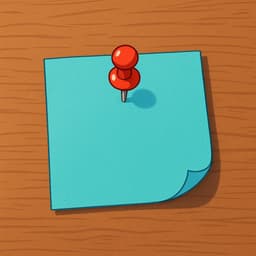What day is it today?
in Spanish¿Qué día es hoy?
/keh DEE-ah ess oy/
This is the most standard, fail-safe way to ask for the day. It works in every Spanish-speaking country and in any social situation.
💬Other Ways to Say It
¿A qué estamos hoy?
/ah keh ess-TAH-mos oy/
A very common idiomatic way to ask for the date in Spain. It literally translates to 'At what are we today?'
¿A cómo estamos hoy?
/ah KOH-moh ess-TAH-mos oy/
Similar to the Spanish version but uses 'cómo' instead of 'qué'. It implies 'How does the calendar stand today?'
¿Qué fecha es hoy?
/keh FEH-chah ess oy/
Specifically asks for the 'date' (calendar number) rather than just the day of the week.
¿Cuál es la fecha de hoy?
/kwal ess lah FEH-chah deh oy/
A slightly more complete and polite way to ask for the date.
¿A cuántos estamos?
/ah KWAN-tos ess-TAH-mos/
Literally 'At how many are we?', referring to the number of the day.
🔑Key Words
Key Words to learn:
📊Quick Comparison
Choosing between asking for the day name versus the calendar date depends on what information you actually need.
| Phrase | Literal Meaning | Best For | Avoid When |
|---|---|---|---|
| ¿Qué día es hoy? | Knowing the day name (Monday, Tuesday) | You specifically need the calendar number (the 15th) | |
| ¿Qué fecha es hoy? | Filling out forms, needing the number | You just want to know if it's the weekend | |
| ¿A qué/cómo estamos? | Casual chat about the date | Formal business writing or speaking to superiors |
📈Difficulty Level
Very straightforward. The 'h' in 'hoy' is silent (sounds like 'oy'), which is the only common trap.
Simple question structure. The only complexity is remembering 'estamos' (we are) for dates vs 'es' (it is) for days.
Knowing when to use the casual 'estamos' forms helps you sound like a native, but the standard form works everywhere.
Key Challenges:
- Silent 'H' in hoy
- Remembering not to capitalize days
💡Examples in Action
Disculpa, ¿qué día es hoy?
Excuse me, what day is it today?
¿A cómo estamos hoy? ¿Es 15 o 16?
What's the date today? Is it the 15th or 16th?
Por favor, escriba la fecha de hoy aquí.
Please write today's date here.
¡No puedo creer que ya es viernes!
I can't believe it's already Friday!
🌍Cultural Context
The Calendar Starts on Monday
In most Spanish-speaking cultures, the calendar week officially begins on Monday (lunes), not Sunday. This reflects the mindset that the weekend (fin de semana) is the true end of the week.
Small Letters Only
Unlike in English, days of the week and months are NOT capitalized in Spanish unless they appear at the very start of a sentence. It's 'lunes' (Monday), not 'Lunes'.
Date Format Flip
When writing out the answer to 'what day is it?', Spanish speakers almost universally use the Day/Month/Year format (DD/MM/YYYY). So, January 5th is 5/1 (not 1/5).
❌ Common Pitfalls
Using 'en' for 'on'
Mistake: "Saying 'En lunes' to mean 'On Monday'."
Correction: El lunes
Capitalizing the days
Mistake: "Writing 'Hoy es Martes'."
Correction: Hoy es martes
Confusing 'tiempo' with 'vez' or 'hora'
Mistake: "Asking '¿Qué tiempo es?' to ask the time or date."
Correction: ¿Qué hora es? (time) or ¿Qué día es? (date)
💡Pro Tips
The 'We' Construction
Notice that many variations use 'estamos' (we are). Spanish speakers often view time as a collective journey—'Where are WE in the calendar?' rather than 'What is the date?'
Answering the Question
To answer simply, use 'Hoy es...' followed by the day (e.g., 'Hoy es martes'). If giving the full date, use 'Hoy es el [number] de [month]'.
🗺️Regional Variations
Spain
Spaniards very frequently use the 'we' form (estamos). It is extremely common to hear 'Estamos a lunes' (We are at Monday) rather than 'Es lunes'.
Mexico
In Mexico, asking '¿A cómo estamos?' is the go-to for asking about the specific date number. You might hear the answer: 'Estamos a 25.'
Argentina
While the 'estamos' forms exist, direct questions about the date/day are very standard here.
💬What Comes Next?
They tell you the day name (e.g., Lunes)
Hoy es lunes.
Today is Monday.
¿Pero qué número?
But what number (date)?
You realize you missed a deadline
Hoy es el 15.
Today is the 15th.
¡Pensé que era el 14!
I thought it was the 14th!
🧠Memory Tricks
Think of 'ESTamos' as 'ESTablished'. When you ask '¿A cómo estamos?', you are asking where we are established in the calendar right now.
🔄How It Differs from English
English speakers ask 'What is the date?', treating the date as an object. Spanish speakers often ask 'At what are we?', treating the date as a location in time that we are occupying together. Also, Spanish never uses 'on' (en) for days; they use 'the' (el).
False Friends & Common Confusions:
Why it's different: Learners often confuse 'tiempo' (time/weather) with 'hora' (clock time) or 'día' (day).
Use instead: Use '¿Qué hora es?' for clock time and '¿Qué día es?' for the calendar.
🎯Your Learning Path
➡️ Learn Next:
Days of the week in Spanish
You need to know the vocabulary (lunes, martes, etc.) to understand the answer!
How to tell time in Spanish
Once you know the day, learning the clock time is the natural next step for scheduling.
Months of the year in Spanish
Essential for understanding full dates like '5 de mayo'.
✏️Test Your Knowledge
💡 Quick Quiz: What day is it today?
Question 1 of 3
If you want to ask specifically for the calendar number (e.g., the 21st) in a formal setting, which phrase is best?
Frequently Asked Questions
What is the difference between 'día' and 'fecha'?
'Día' usually refers to the name of the day (Monday, Tuesday), while 'fecha' refers to the specific calendar date (October 5th, 2023). If you ask for the 'día', you might just get 'Lunes'.
Can I say '¿Qué es la fecha?'
It is understandable but incorrect. The natural phrasing is '¿Cuál es la fecha?' (Which is the date?) or simply '¿Qué fecha es?'.
Why do I hear people say 'Estamos a lunes'?
This is a very common construction that means 'We are at Monday.' It views time as a collective location. It's perfectly natural and correct to use.
Do I use 'ser' or 'estar' for dates?
You can use both, but the structure changes! Use 'ser' for identity: 'Hoy ES lunes' (Today is Monday). Use 'estar' for location in time: 'ESTAMOS a lunes' (We are at Monday).
📚Continue Learning Spanish Phrases
Explore More Phrases in These Categories
Find similar phrases to expand your Spanish vocabulary:
Want to Learn More Spanish Phrases?
Browse our complete collection of Spanish phrases organized by situation, from basic greetings to advanced conversations. Perfect for travelers, students, and anyone learning Spanish.
View All Spanish Phrases →

